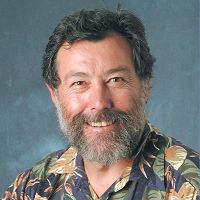Liu et al., 2016
Concentration-Discharge Relationship and Endmember Mixing in the Intermediate and Large Watersheds of the US West
Liu, F.; Miller, M.P.; Williams, M.W.; Conklin, M.H.; Yang, J.; Bales, R.C. (2016)
Fall Meeting, American Geophysical Union, December 2016. Abstract H52E-06.
-
Sierra, COLLABORATOR
-
Boulder, GRAD STUDENT
-
Boulder, INVESTIGATOR
-
Sierra, INVESTIGATOR
-
Sierra, INVESTIGATOR
Abstract
About 70 intermediate (100s km2) to large (1000s km2) watersheds draining from the Rocky Mountains (the Missouri Region and the Upper Colorado Region) and Sierra Nevada (the California Region), where both discharge and electrical conductivity (EC) were measured by the USGS, were examined to understand the connection between concentration-discharge relationships (C-Q) and endmember mixing. More than 50% of the watersheds, whose streamflows were not strongly regulated, showed a strong power function of C-Q, with R2 values ranging from 0.5 to near 1 and exponents greater than -0.6. The C-Q power function defines two EC envelope values, to which the EC values approach during low and high flows. The high envelope EC values varied from 100s to 1000s µS cm-1 and the low values from 10s to 300 µS cm-1. Analogous to the travel time distribution notion, the C-Q power function could be seen geometrically as the distribution of flow-weighted mean EC values from myriad endmembers over the total flow contributed by all endmembers. Those myriad endmembers have EC values spanning a large spectrum, even beyond that defined by the low and high envelope values. As the power function curve itself shows, however, all endmembers can be simply grouped into two dominant endmembers with distinct EC values based on the magnitude of relative flow contributions to streamflow. The other potential endmembers with intermediate EC values or values higher than the high envelope values, as we often observe in the field, could be either a mixture of the two dominant endmembers or extremely low flow contributions to streamflow at the scales examined. Otherwise, the C-Q power function cannot be maintained as shown by a hypothetical endmember mixing model. The low and high envelope EC values provide constrains to characterize the two dominant endmembers. Hydrologically, the two endmembers often correspond to surface runoff and/or shallow subsurface flow and deeper groundwater. The strong power relation of C-Q in streamflow makes it possible to develop a simple, efficient and economic model for estimating the contributions of shallow- and deep-pathway flows without measured endmembers for large, less regulated watersheds draining from high mountains.
Citation
Liu, F.; Miller, M.P.; Williams, M.W.; Conklin, M.H.; Yang, J.; Bales, R.C. (2016): Concentration-Discharge Relationship and Endmember Mixing in the Intermediate and Large Watersheds of the US West. Fall Meeting, American Geophysical Union, December 2016. Abstract H52E-06..
Explore Further




